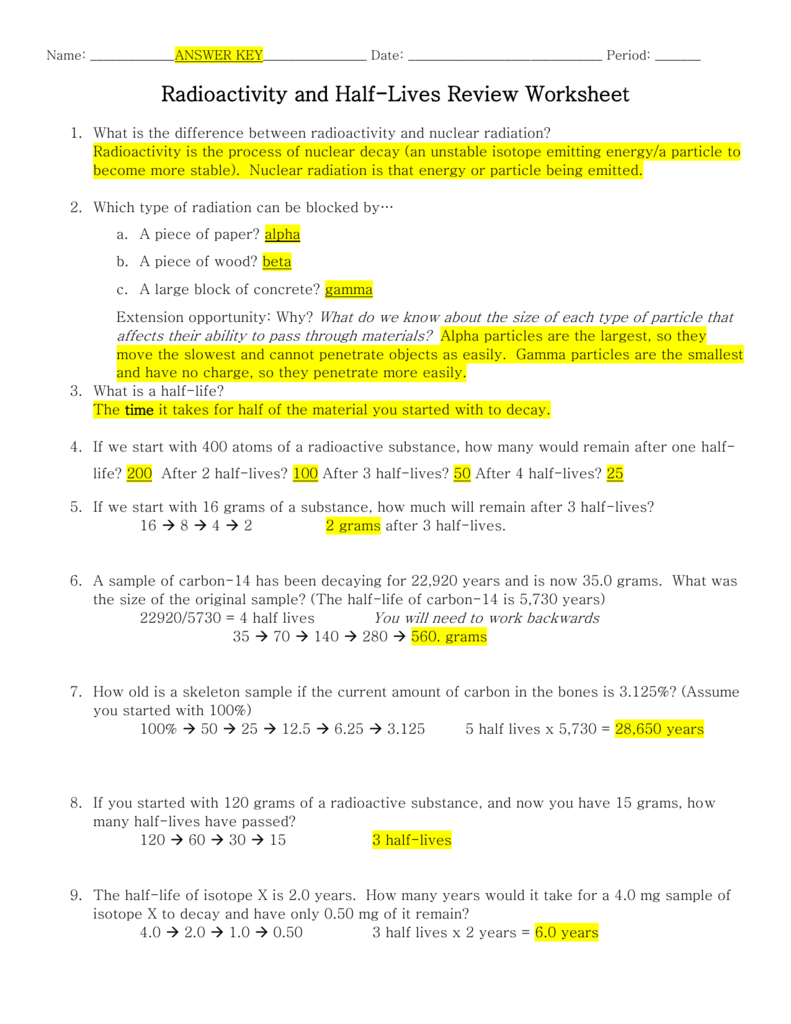Random numbers to generate keys or to use them as initial-ization vectors 6. These number sequences can either be generated using pseudorandom number generators (PRNG) or true random number generators (TRNG). Badly designed PRNGs make various attacks on otherwise secure crypto-graphic algorithms possible 6. A radionuclide (radioactive nuclide, radioisotope or radioactive isotope) is an atom that has excess nuclear energy, making it unstable. This excess energy can be used in one of three ways: emitted from the nucleus as gamma radiation; transferred to one of its electrons to release it as a conversion electron; or used to create and emit a new particle (alpha particle or beta particle) from the. If you need 5% of radioactive Silicon by 4 p.m. To create an explosive to blow up your neighbor's dog house (the dog leaves 'gifts' in your yard), will you have enough if the original sample starts undergoing decay when you leave for school at 8 am?
- Using Radioactive Half Life To Generate Keys Free
- Using Radioactive Half Life To Generate Keys Lyrics
- Radioactive Half Life Table
- Radioactive Half Life Problems
Using Radioactive Half Life To Generate Keys Free
Scientists look at half-life decay rates of radioactive isotopes to estimate when a particular atom might decay. A useful application of half-lives is radioactive dating. This has to do with figuring out the age of ancient things.
If you could watch a single atom of a radioactive isotope, U-238, for example, you wouldn’t be able to predict when that particular atom might decay. It might take a millisecond, or it might take a century. There’s simply no way to tell.
But if you have a large enough sample, a pattern begins to emerge. It takes a certain amount of time for half the atoms in a sample to decay. It then takes the same amount of time for half the remaining radioactive atoms to decay, and the same amount of time for half of those remaining radioactive atoms to decay, and so on. This process is shown in the following table.
| Half-Life | Percent of Radioactive Isotope Remaining |
|---|---|
| 0 | 100.00 |
| 1 | 50.00 |
| 2 | 25.00 |
| 3 | 12.50 |
| 4 | 6.25 |
| 5 | 3.12 |
| 6 | 1.56 |
| 7 | 0.78 |
| 8 | 0.39 |
| 9 | 0.19 |
| 10 | 0.09 |
The amount of time it takes for one-half of a sample to decay is called the half-life of the isotope, and it’s given the symbol:
It’s important to realize that the half-life decay of radioactive isotopes is not linear. For example, you can’t find the remaining amount of an isotope as 7.5 half-lives by finding the midpoint between 7 and 8 half-lives. This decay is an example of an exponential decay, shown in the figure below.
Safe handling of radioactive material
Knowing about half-lives is important because it enables you to determine when a sample of radioactive material is safe to handle. The rule is that a sample is safe when its radioactivity has dropped below detection limits. And that occurs at 10 half-lives.
So, if radioactive iodine-131 (which has a half-life of 8 days) is injected into the body to treat thyroid cancer, it’ll be “gone” in 10 half-lives, or 80 days.
This stuff is important to know when using radioactive isotopes as medical tracers, which are taken into the body to allow doctors to trace a pathway or find a blockage, or in cancer treatments. They need to be active long enough to treat the condition, but they should also have a short enough half-life so that they don’t injure healthy cells and organs.

Using Radioactive Half Life To Generate Keys Lyrics
Radioactive dating
Radioactive dating is helpful for figuring out the age of ancient things. Carbon-14 (C-14), a radioactive isotope of carbon, is produced in the upper atmosphere by cosmic radiation. The primary carbon-containing compound in the atmosphere is carbon dioxide, and a very small amount of carbon dioxide contains C-14.
Plants absorb C-14 during photosynthesis, so C-14 is incorporated into the cellular structure of plants. Plants are then eaten by animals, making C-14 a part of the cellular structure of all living things.
Radioactive Half Life Table
As long as an organism is alive, the amount of C-14 in its cellular structure remains constant. But when the organism dies, the amount of C-14 begins to decrease. Scientists know the half-life of C-14 (5,730 years), so they can figure out how long ago the organism died.
Radioactive Half Life Problems
Carbon-14 dating can only be used to determine the age of something that was once alive. It can’t be used to determine the age of a moon rock or a meteorite. For nonliving substances, scientists use other isotopes, such as potassium-40.